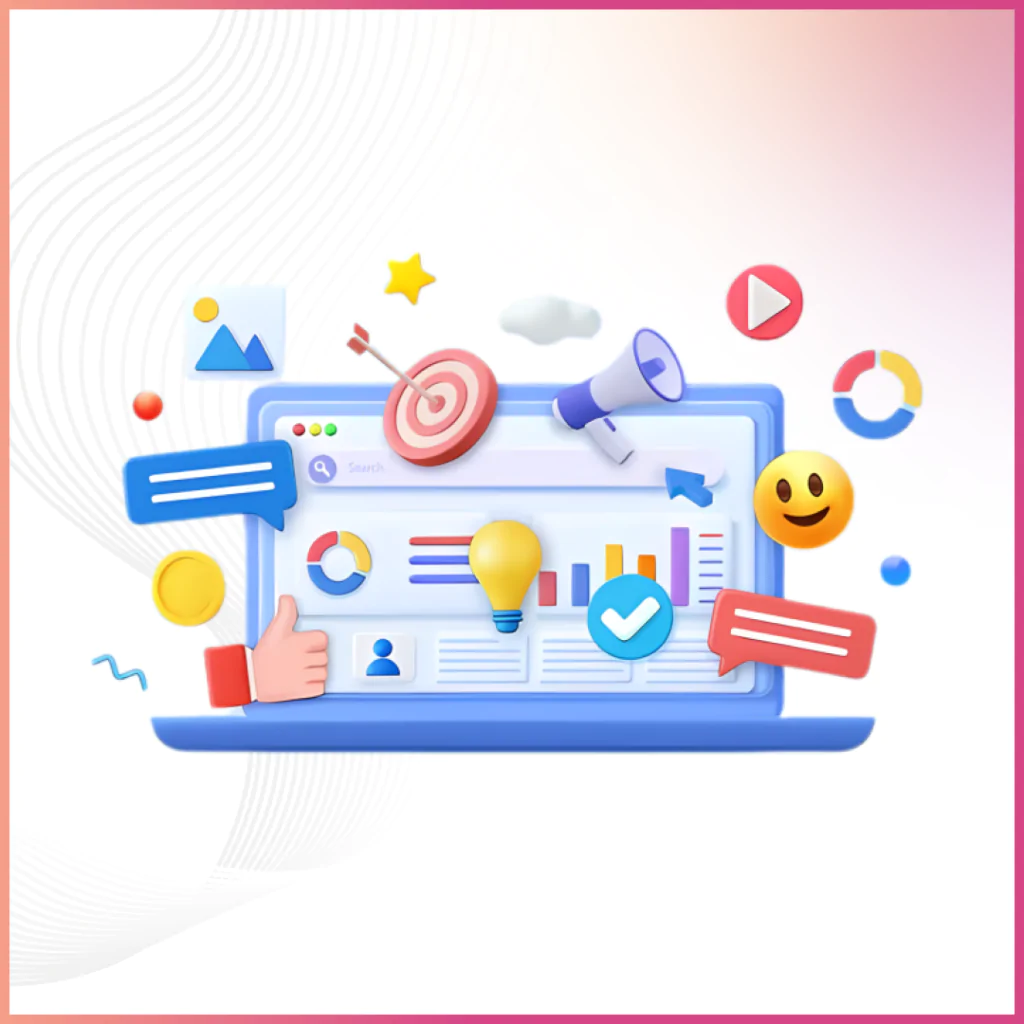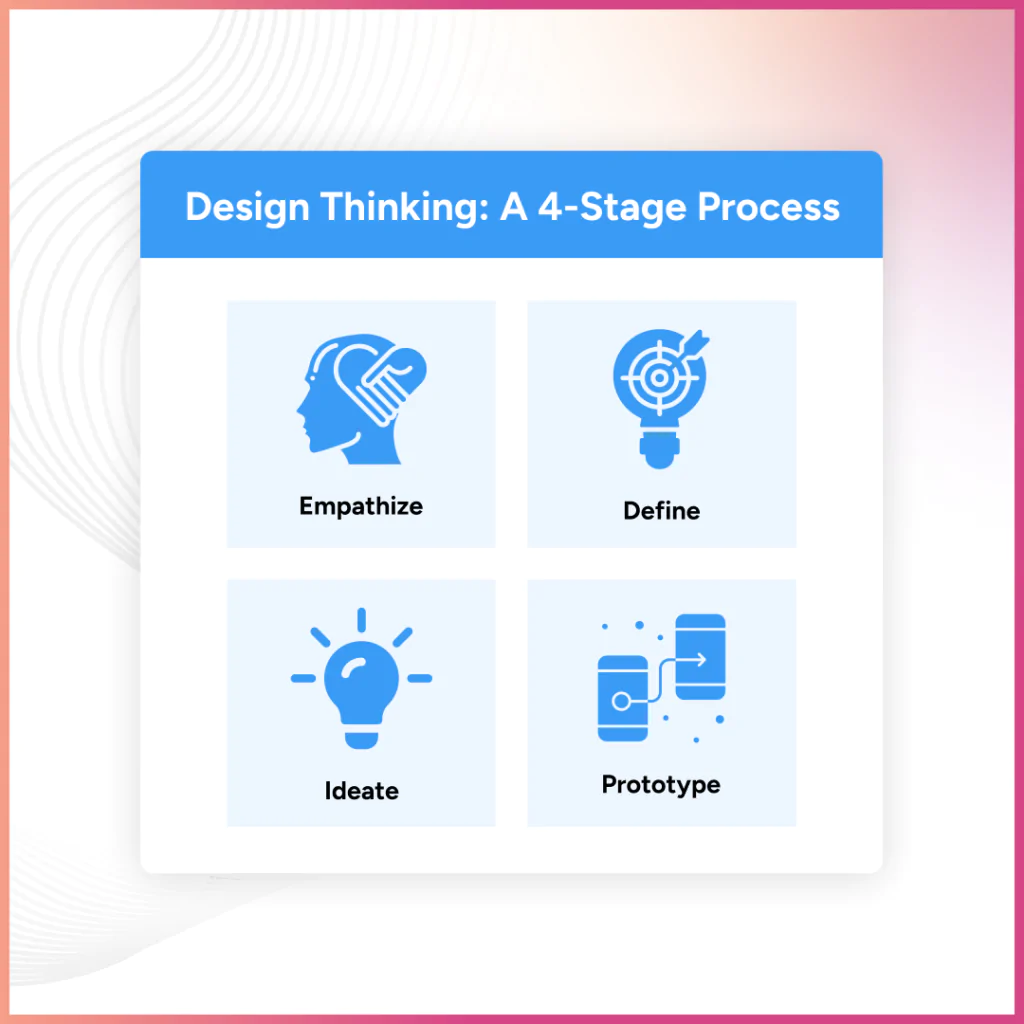Product Design Process and development does not have a specific certified method that professionals can choose. Over the years, these UI UX professionals have developed a pool of methods that they can choose from. This blog is going to be an overview of the product design process steps that we have developed over the years, which work beautifully for us, and now it is time to pass on the torch. Use this as a toolbox to ideate the process when designing a product that has enough features that the users would love.
To begin with, there are numerous factors that affect the digital product design process. The size of the company, budget allocated to the UX design, and even the deadlines are the factors that affect the design process. However, a good design process is when a business meets the users’ needs while satisfying them with technical possibilities. For this, no one, including the UIUX studio, does not have a method that could justify a successful guide for a proper product design process. However, we would like to share some of the methods that would serve as a guide to the designers in designing a user-centered product design process.
Steps of designing a user-centric product design process
To approach and identify the user, we have been using the 4Ds methods, also known as the Double diamond product design process, which involves four phases: Discover, Define, Develop and Deliver. Starting the process with product discovery, we understand the effectiveness of the market. The problem and solutions approach helps us a lot in this, meaning we identify the problems that the product solves and approach them the same way. To get more details, you can schedule a 30-minutes free consultation call with us today.
Once the product discovery is made, we run two tasks simultaneously for the flexibility that we get with the running of the tasks. While the discovery of the product helps us define the product design, we in the background start the development process and make it meaningful with all the insights that can be added from the research and the data derived from the product design process. Let’s discuss the same methodology of how to design process effectively stepwise:
Step 1: Product Discovery
Problem solution and the potential users
For a user-centric digital product, the discovery of the product is extremely important. This is because it creates a base for the product and also the demand. Along with that, it also narrows down the process and creates a demand for the product. The UI UX team researches the product and identifies the problem that the digital product is solving. Working rigorously with the clients helps us at the start of the process. Understanding the current phase of the market and extensive study of the users help us in understanding the depth of the market and make out a plan. This can be done in two ways:
Client-oriented
The client you are working for has probably done the research before even entering this stage. Understanding their POV and designing an effective way to roadmap the discovery of the product. Most of the time, along with the history and ideation of the company, we get quantitative and qualitative data like the market position, client segmentation, competitors, target users, and buyers tracks. This is where the whole method is projected, and the problem is almost solved. Now adding those values like brand value, customer research, etc., we get discovery of the product to start a user-oriented product design.
Research Method
Oftentimes, you have to do your own research to get the desired results. Though this method also starts with the user but only about knowing the brand value and the product better. However, in the latter part, like the competitive research, finding the potential user base is done on our part. Oftentimes this proves to be effective, but all the effectiveness of the product discovery often is based on the clients’ requirements. We depend on the field research that helps us understand the user behavior and the depth of the market, including the flexibility that the digital product can get.
Step 2: Narrow Down – Defining the Digital Product
The first step is more about collecting data. The best and the worst part about data in the product design process step is that it is often present in abundance. In this step we define the digital product, meaning we analyze the data in such a way that it would help in developing a roadmap. The data should make sense, and the goal of the product should be addressed with it. When the detailed analysis of the done is underway, UIUX studio does that in three sub-steps:
User Behavior
Believe it or not, but User behavior is the savior in every process of both the digital and physical product. The data helps us in the assumption of the user behavior on which we derive a theory. This theory is back-tested by interviews, studying the competition, market research, even building buyer personas that might attract a few users. User behavior changes with time, so it doesn’t matter how much time and money you spend on this method, keep in mind the goals like goals, motivation, the background, irritations, context, etc. These are the things that define the user behavior, and it is on this thing that it should be based on.
Jobs to be done
In this sub-process, we actually understand the placement of the product in the market. Meaning, we at UIUX Studio create a framework that helps us identify the users’ needs and preferences about the product. We do that by analyzing the attitude of the user towards the product. Knowing which segment of the product most of the users relate with and focusing on the feature will come in handy in this step.
How to do it
The last step is actually a bit tricky, and you have a chance of revisiting the data sheets again and again. In this process, all the finalized data is combined to find a way to address the problems, along with that how to remove the other obstacles. “Empathy” is the key to this process. Changing the POVs can help in understanding this in a better way. Getting this right, in theory, is what we focus on in this step as it defines everything the digital product designing process is all about. Try to answer the 5Ws and 1H questions in this, and you will be halfway there.
Step 3: Define the Solution and Prioritize Features
Now that most things are addressed, define the solution of the product in this process. Define I by combining everything that you have acquired in the last two steps. The process actually starts from step 1. Often time uses this user stories methodology to define and prioritize the features of the product. For, e.g., As a (User), I want to (Solution the product offers) so that I can (Benefit the user get). This process is not only user-oriented but also helps in knowing different problems that the product might solve. Doing this, again and again, backed by the research data, gives a full proof result. Build the Information Architecture (IA), sketch it on paper, and wireframe it. This is to understand the structure before actually starting the product design process. It helps in ensuring the thought is the same as the execution.
Step 4: Delivery – Prototyping, Testing, Failing & Implementation
Product design process steps are often doing the right thing in the right way. Now that everything you have is ready, just start by prototyping it. Doing it quickly and testing them is the way to go. Prototyping helps you understand the source better, and rather than creating one perfect design, doing it roughly and making it perfect can ideate the perfect design that you desire. Prototyping helps in knowing which feature is working and also makes the testing easier. Also, moving from low fidelity prototypes to high fidelity prototypes as it helps in better execution and also eases the testing process. Every prototype will almost be a failure, and every test will be a success if your implementation is correct. So, this is the product design process guide that will help you build a user-centric digital product.
Conclusion
Product design is one of the most important processes while you are trying to introduce a product in a market. A good product design can help you achieve higher rates of success. A good design will get etched in the memory of your clientele. The best part is that these product designs are very helpful in the retail and eCommerce sphere. A good design on the eCommerce domain is sure to get better sales, as the customer has to judge the product based on its visual aspects. Apart from it, the Mobile and telecom sphere can also make use of these product designs. We at UIUX can help them to get some of the best in the market and become a powerhouse.


